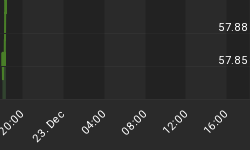It seems as if the spring rally has probably exhausted itself. And it is about time given the extent and rapidity of the move. The MSCI World Index increased by 45.2% from its March lows until the early June high and the MSCI Emerging Markets Index by a staggering 68.9%. Both these indices have only had one down-week since the advance commenced in early March.
Leading markets such as Russia (+137.0%), India (+89.5%), China (+54.7%) and Brazil (+50.4%) significantly outperformed laggards such as the Dow Jones Industrial Index (+27.5%) and the S&P 500 Index (+39.9%), although all markets recorded very respectable returns. The major US indices have gained for 12 out of the past 14 weeks.

Source: Plexus Asset Management (based on data from I-Net Bridge)
Focusing on the US, the S&P 500 Index (911) has backed off resistance at its January high (935) and is less than five points away from breaking down through the key 200-day moving average (906) - broken to the upside only two weeks ago.
Importantly, short-term oscillators such as the rate-of-change (momentum) indicator is on a knife's edge of giving a selling signal, i.e. crossing through the zero line in the bottom section of the chart below. Also note the negative divergence between the Index and the ROC line - typically be a warning sign that a near-term trend change will take place.

Source: StockCharts.com
The venerable Richard Russell of Dow Theory Letters fame said: "In order for a counter-trend rally in a bear market to be sustained, it requires steady or rising buying power plus short covering. Lowry's Buying Power Index has been declining steadily since May 8. At yesterday's market close, this Index (demand) was only 24 points higher than it was at the March 9 lows. Furthermore, volume is drying up.
"This is extremely negative action. Whenever buying power contracts during a rally in a bear market, the prevailing primary bear market forces immediately take over. For that reason, unless the trend of declining buying power soon halts and reverses, I believe that the March 9 lows will be attacked and violated."
For more about key levels and the most likely short-term direction of the S&P 500, Adam Hewison of INO.com prepared another of his popular technical analyses. Click here to access the short presentation.
What about valuations? In order not to work with notoriously unreliable forward-looking earnings estimates, I prefer using Robert Shiller's cyclically adjusted price-earnings ratio (CAPE), or normalised earnings as they average ten years of earnings. This measure provides a good picture of the market's value regardless of where we are in the business cycle. On this basis, the multiple increased to 15.8 during the rally compared with a long-term average of 16.3. This represents "average" value at best.

I have argued in my post of two days ago ,"Have stock markets run away from valuations?", that based on the historical relationship between the Purchasing Managers Index (PMI) and stock market movements, the S&P 500 seems overpriced under all scenarios over the next few months and only reaches positive territory again in August under the "very optimistic" scenario and in November under the "optimistic" scenario".
It is difficult to envisage how much of a pullback we might see. I would be surprised if the retreat is not at least 10%, but do not exclude a bigger and longer correction than what many pundits are expecting. As this juncture my advice will be to assume a defensive position in your investment portfolio.
Did you enjoy this post? If so, click here to subscribe to updates to Investment Postcards from Cape Town by e-mail.















